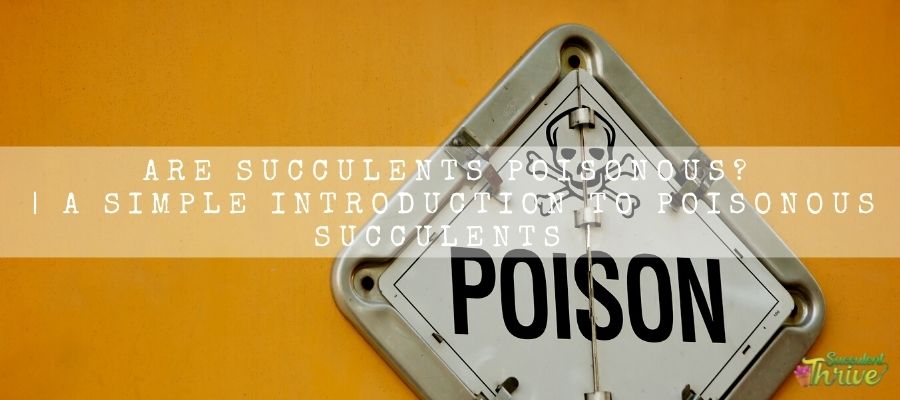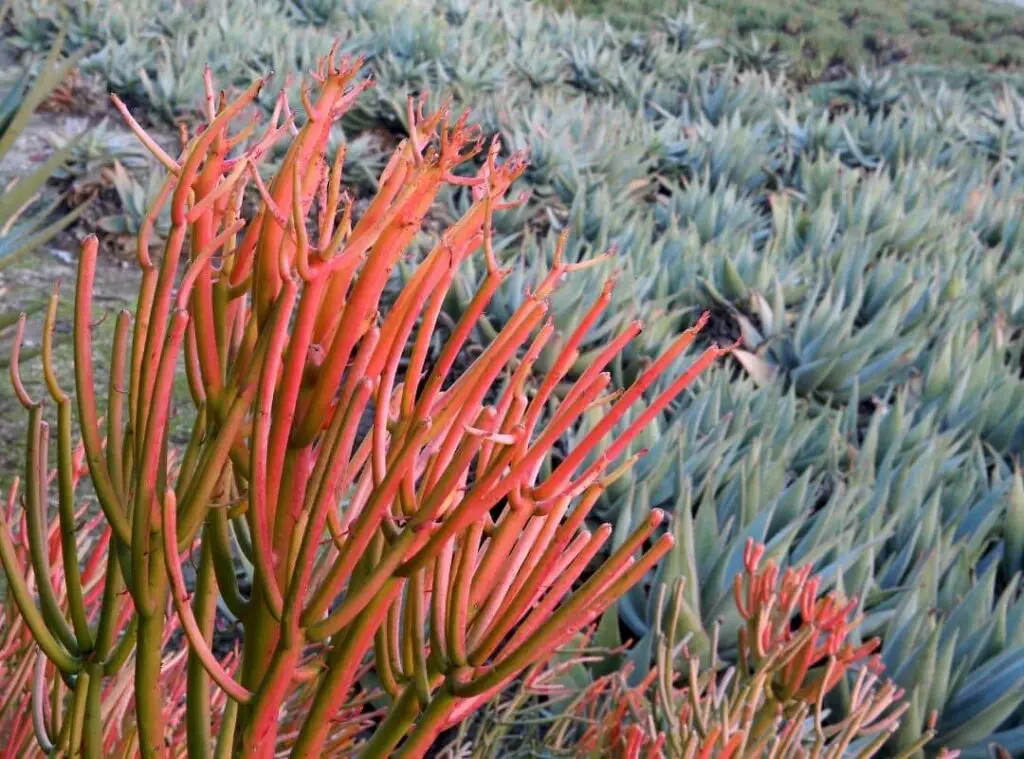Are succulents poisonous? This question arises when you try to start your own succulent garden. You are going to find the answer here.
Although succulents are named as very good houseplants, you should know if they are harmful to humans and pets or not.
However, few succulent species can be toxic to humans and pets. Beautiful Rosettes Succulents are generally harmless and pose no threat to humans or their pets.
So, it is important to be aware which succulents can be toxic.

Are succulents poisonous to humans?
Many varieties of succulents are not toxic to humans. Many of them can be used as medications and ointments.
However, some less varieties of succulents can be poisoned to humans when touched or ingested. So, you should handle them very carefully.
When someone first starts growing succulents, they may not realize that some of them are potentially dangerous.
Cacti spines can be quite painful, as everyone knows. However, aside from the cactus’s spines, less talk about the risks of succulent plants.
There are a number of succulents which are poisonous. Few are given below.
Euphorbia
Euphorbia is a huge flowering plant genus with over 2000 species. Spurge is the popular name for the genus.
The genus includes a diverse group of plants, including blooming trees, shrubs, and succulents.
The Euphorbia family is the most well-known toxic succulent to humans and pets. The leaves of these plants exude a white sap that can irritate the skin.
On the other hand, the Euphorbia produces rashes in those who come into contact with it.
Kalanchoe
The Kalanchoe is a harmful succulent to humans if consumed. Kalanchoe has a naturally occurring toxin that can harm the heart.
This toxic chemical is comparable to digoxin, a major cardiac medicine.
Aloe vera
Aloe vera is a perennial succulent plant that natives to the Arabian Peninsula. The plant is grown for a variety of reasons, including medicinal, agricultural, and decorative uses.
Over the years, the plant has been utilized in skin treatments, cosmetics, drinks, and ointments.
The plant is toxic to both humans. If consumed, however, it is toxic to dogs. Vomiting, diarrhea, fatigue, lack of appetite, changes in urine color, and tremor are all possible symptoms.

Succulents: Are they Poisonous to Pets?
Normally, even well-behaved dogs can chew plants. So, you should have known what are the household succulents which can be poisonous to pets. I listed below some poisonous succulents for your pets.
Crassula ovata (Jade plant)
Toxicity: to dogs, cats, horses
The jade plant can be called The money plant or lucky plant.Mozambique and South Africa are native to the plant.
However, it has become a popular houseplant all around the world.it looks like a small tree. The plant produces little white or pink blooms and has thick branches with deep green jade leaves.
The plant is favored because it is simple to grow and care for.
Jade plants can be toxic to pets. Vomiting, lethargy, loss of coordination and a low heart rate are all signs of toxicity of dogs.
Aloe vera (Aloe)
Toxicity: to dogs, cats, horses
Aloe vera is a typical houseplant with several health advantages with medical benefits. Aloe vera can be toxic to pets.
Vomiting, diarrhea, fatigue, lack of appetite, changes in urine color, and tremor are all possible symptoms.
Philodendron bipennifolium (Planta Panda/ fiddle leaf)
Toxicity: to dogs, cats
Panda Plant, commonly known as Fiddle Leaf Philodendron. Panda plants are a popular succulent since they are easy to care for.
It’s known for its velvety, hairy leaves that appear like cat ears. The leaves are oval in form and have a grayish green tint with brown ends.
They are coated in small hairs. The plant comes from Madagascar and may be cultivated both indoors and out.
Insoluble calcium oxalates (a form of crystal) are found on the leaves of the planta plant.this calcium oxalates can irritate tissues. Mouth discomfort, vomiting, and trouble swallowing are all signs of poisoning.
Sansevieria Trifasciata (Snake Plant)
Toxicity: to dogs, cats
Snake Plant is a low-maintenance houseplant that thrives in a range of environments. But, Saponins are found in the snake plant.
When the snake plant is eaten, it causes moderate toxicity, including nausea, vomiting, and diarrhea.
Kalanchoe spp. (Kalanchoe)
Toxicity: to dogs, cats
The Kalanchoe succulent plant can bloom during the winter months. They are drought resistant and simple to maintain.
But, The cardiac glycosides found in kalanchoe plants can produce lethargy, increased salivation, vomiting, diarrhea, and stomach discomfort.
If a considerable amount of kalanchoe is consumed, it can cause irregular heartbeats, a rapid heart rate, shortness of breath, extreme weakness, and death.
Euphorbia family
Toxicity: Toxic to dogs, cats, and horses
The Euphorbia family of toxic succulents is the most well-known. The leaves of this succulent plant can produce a white sap that can irritate the skin.
Coming into touch with the sap might create a rash in your pet. This succulent can irritate the tongue and stomach, causing vomiting.
If your pet eats a succulent, what should you do?
If your pet consumes a succulent, you must identify the plant as soon as possible. then, contact your local veterinarian if the plant is toxic.
But, if you cannot contact the local veterinarian, then you can contact the poison control center.
Read Next: Pencil Cactus Roots | 7 Small But Important Things To Know |
